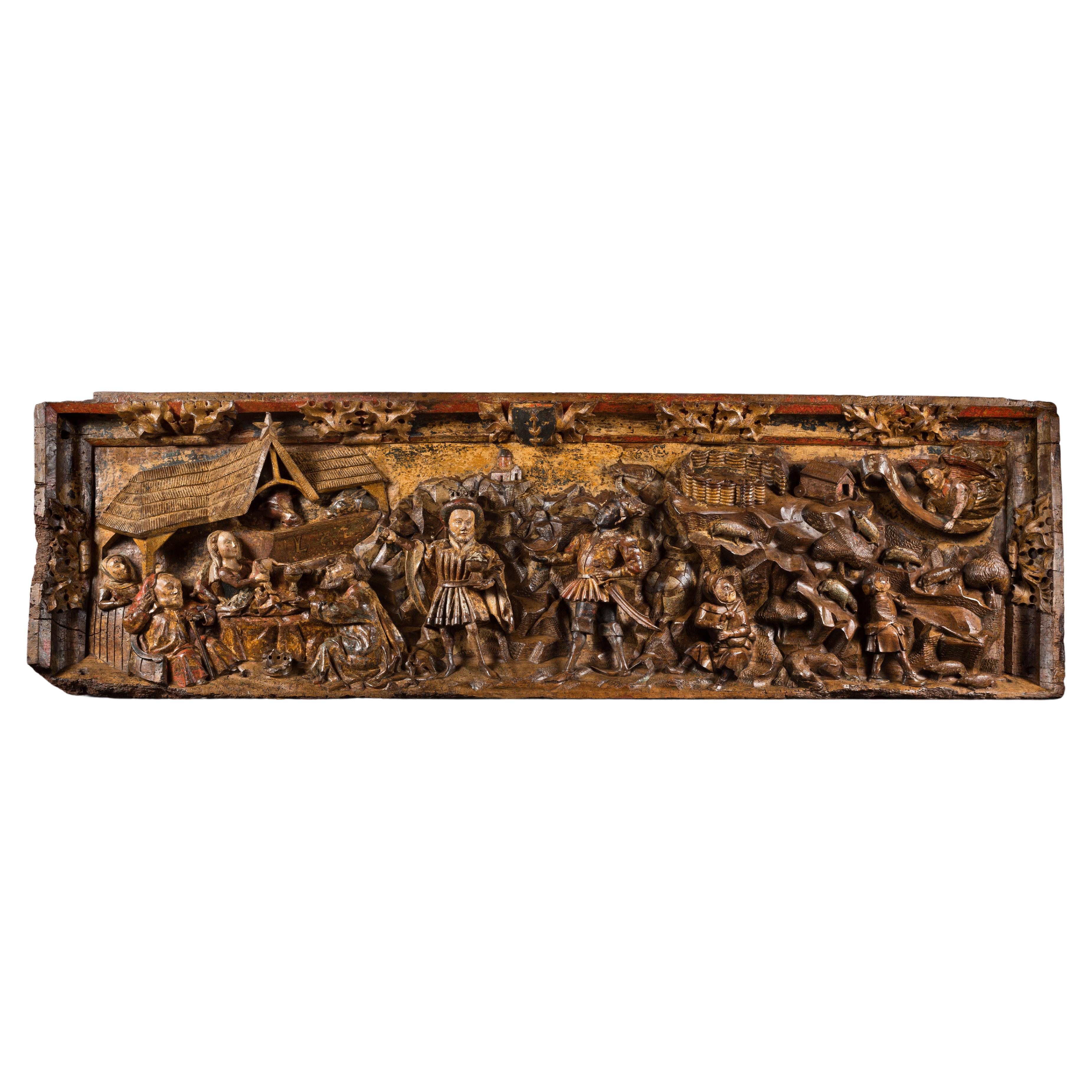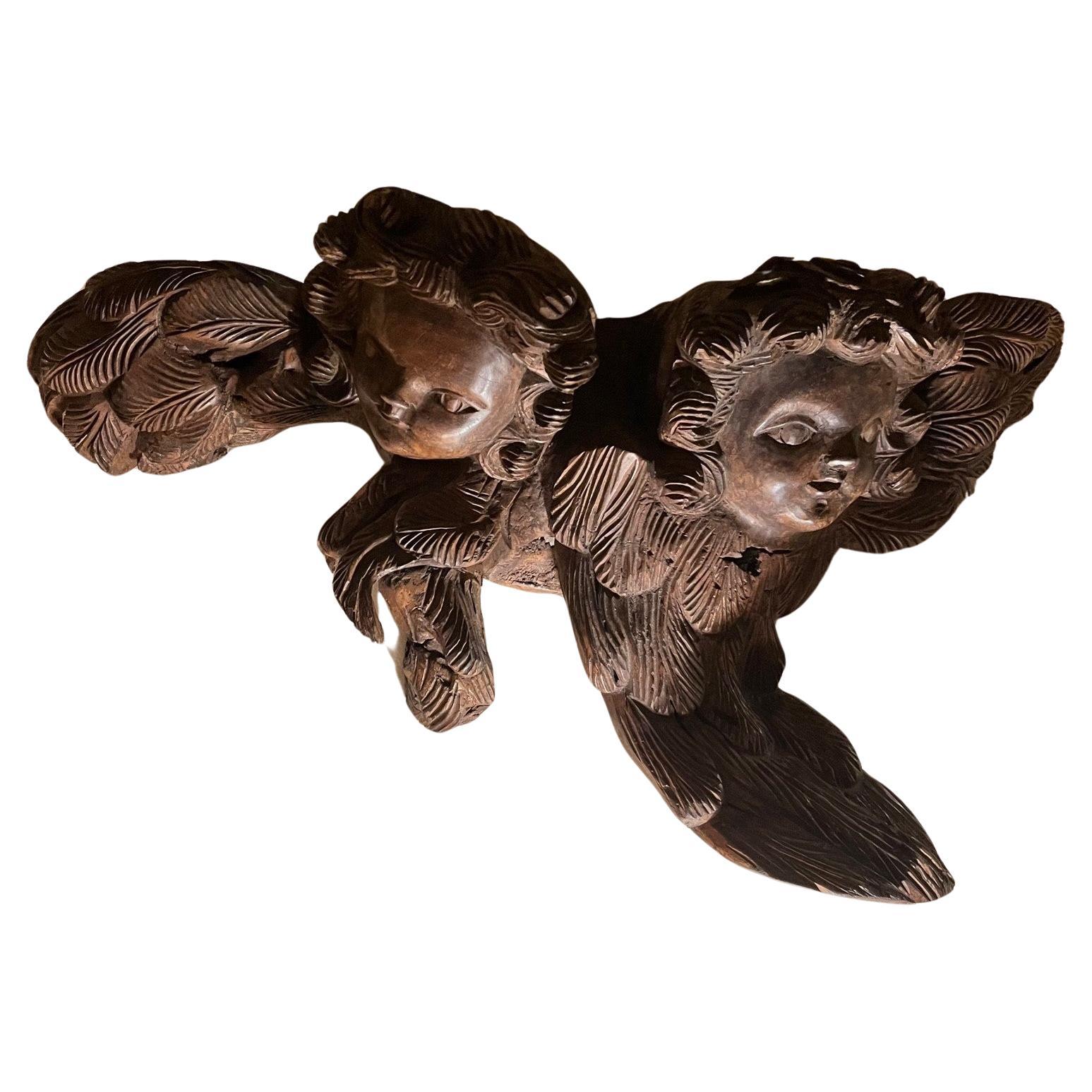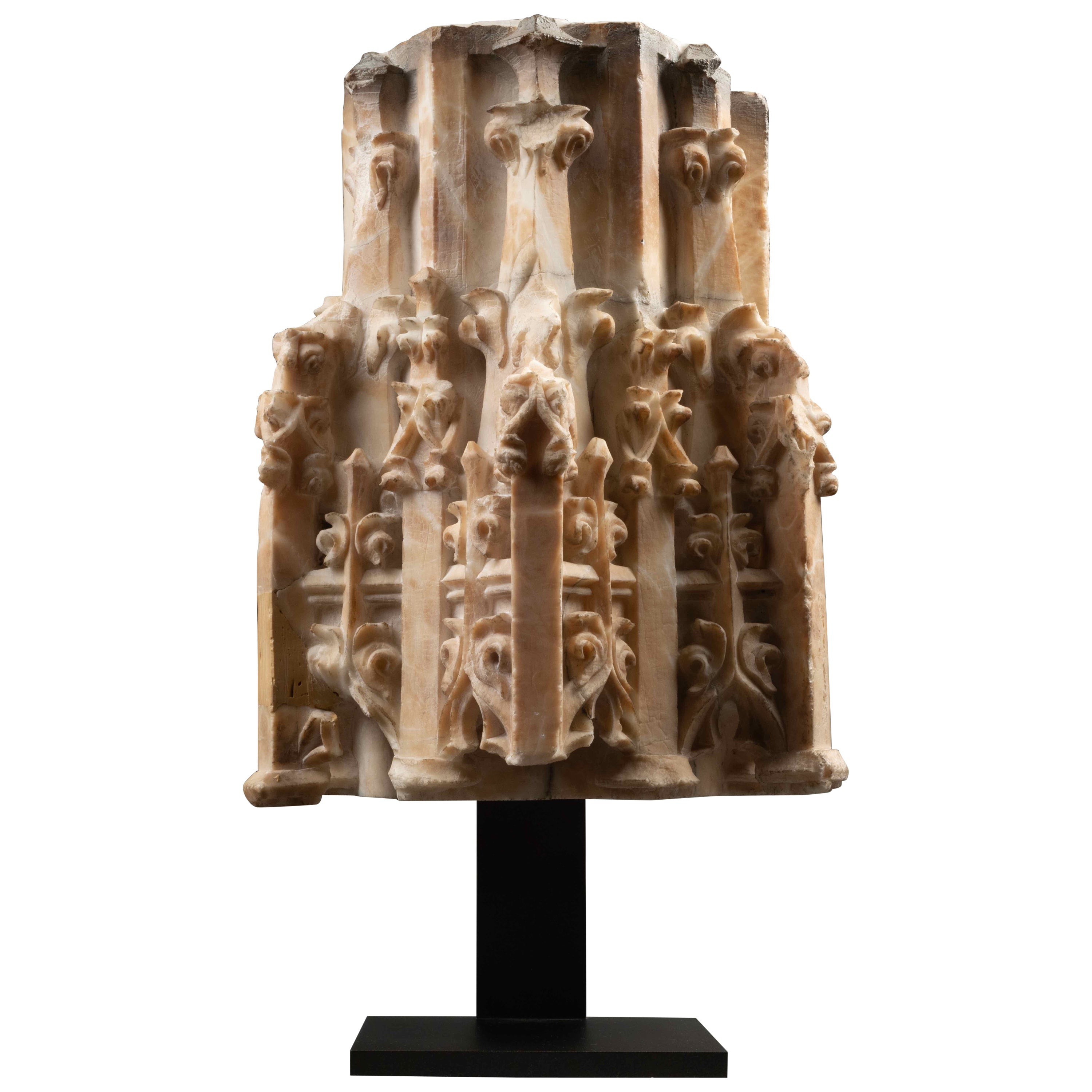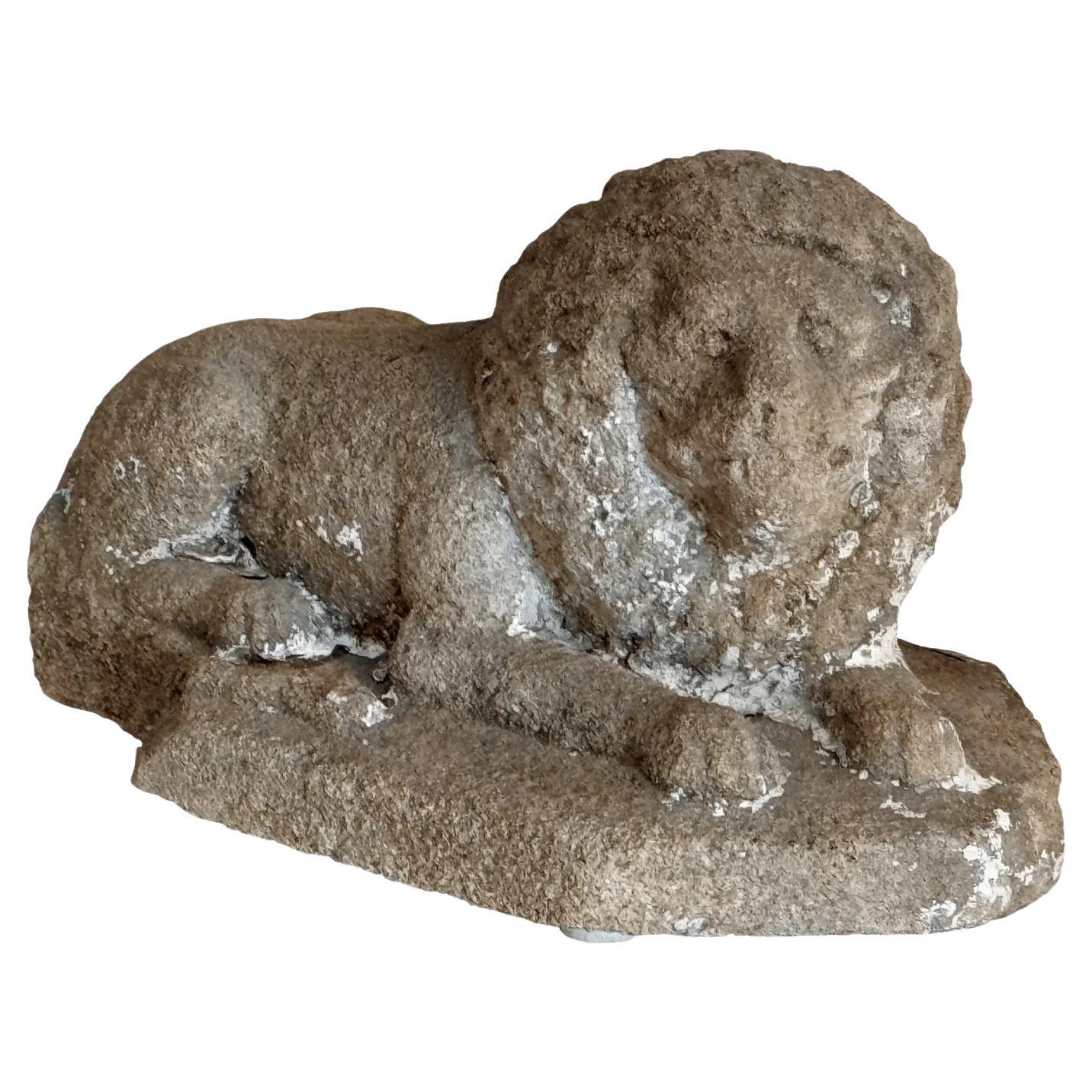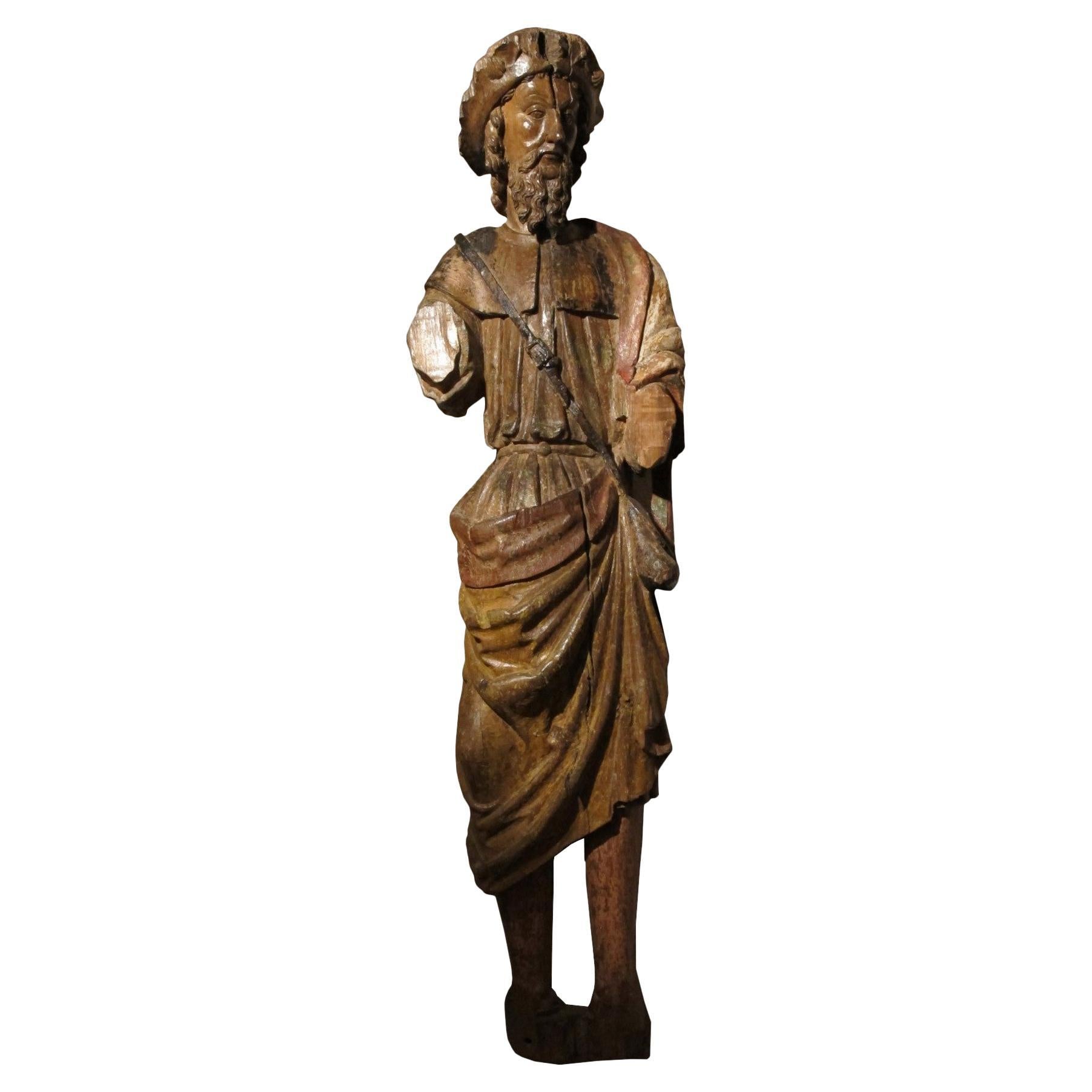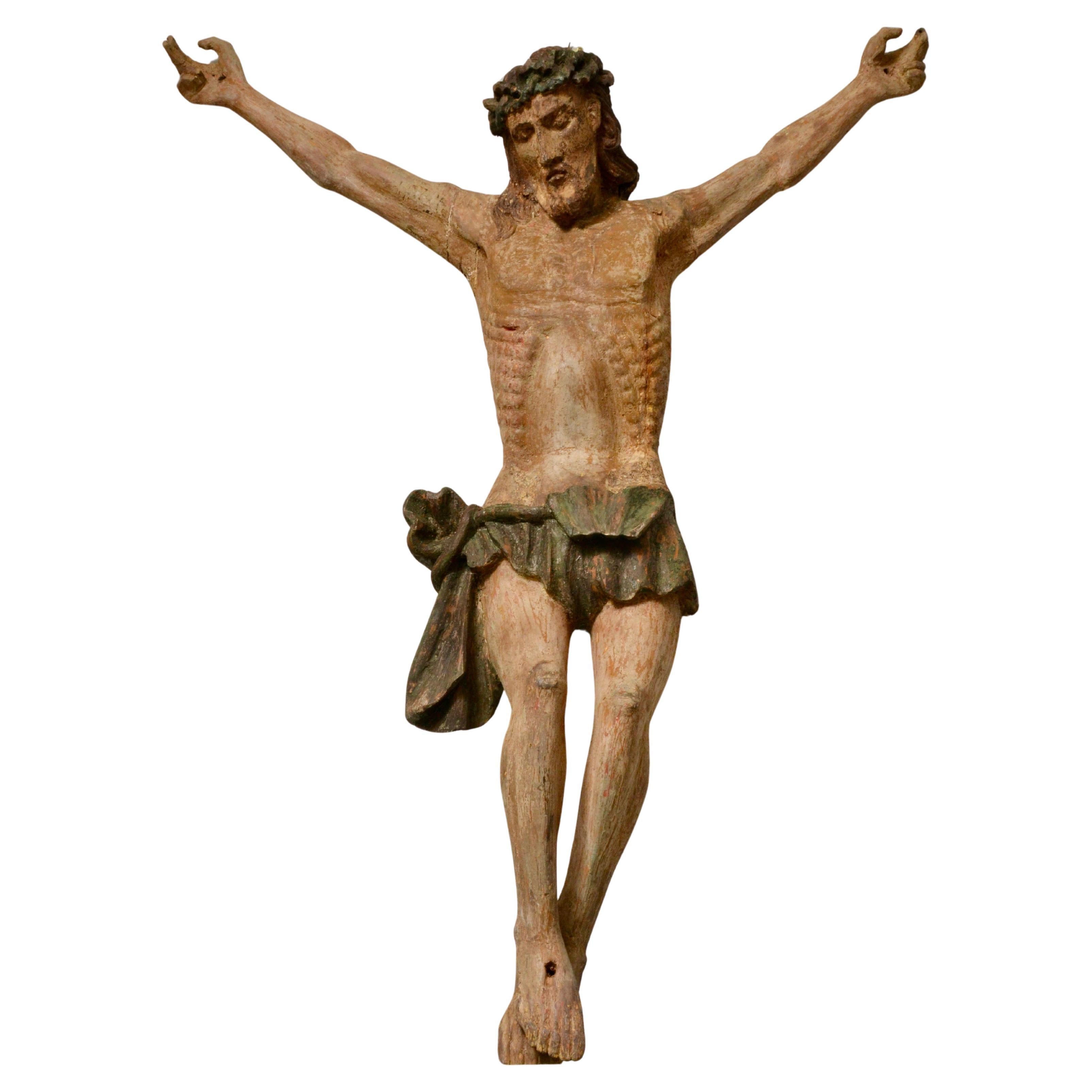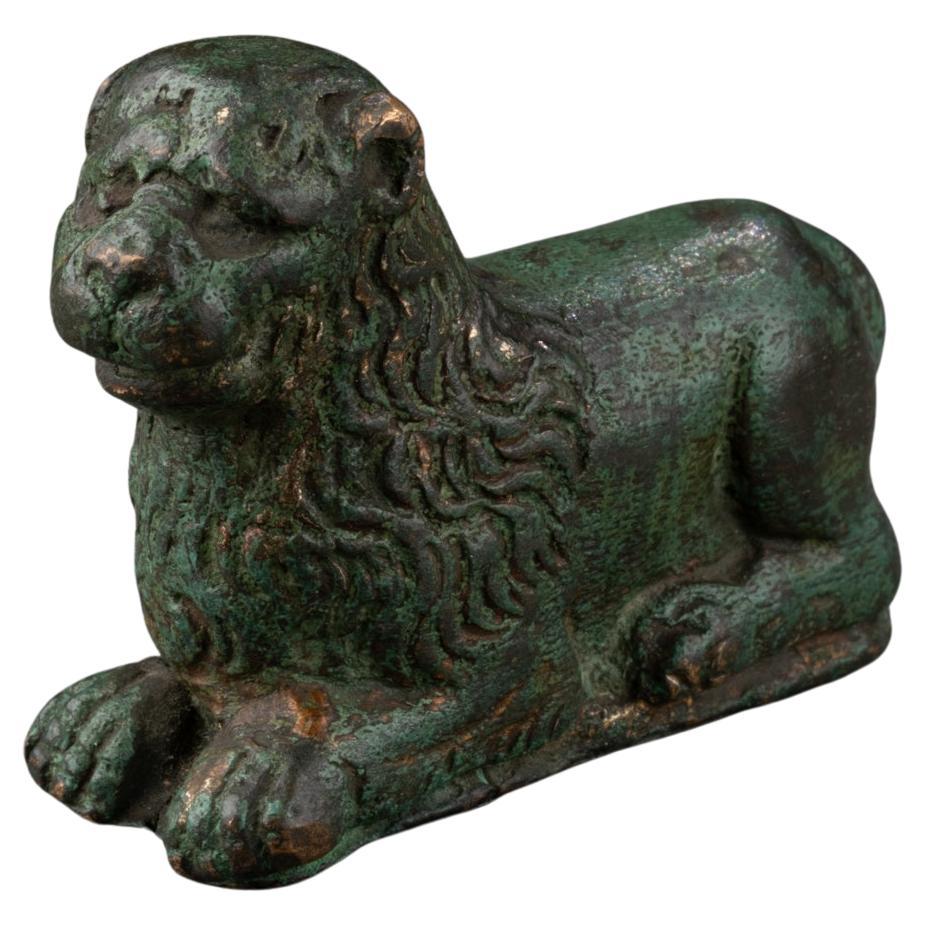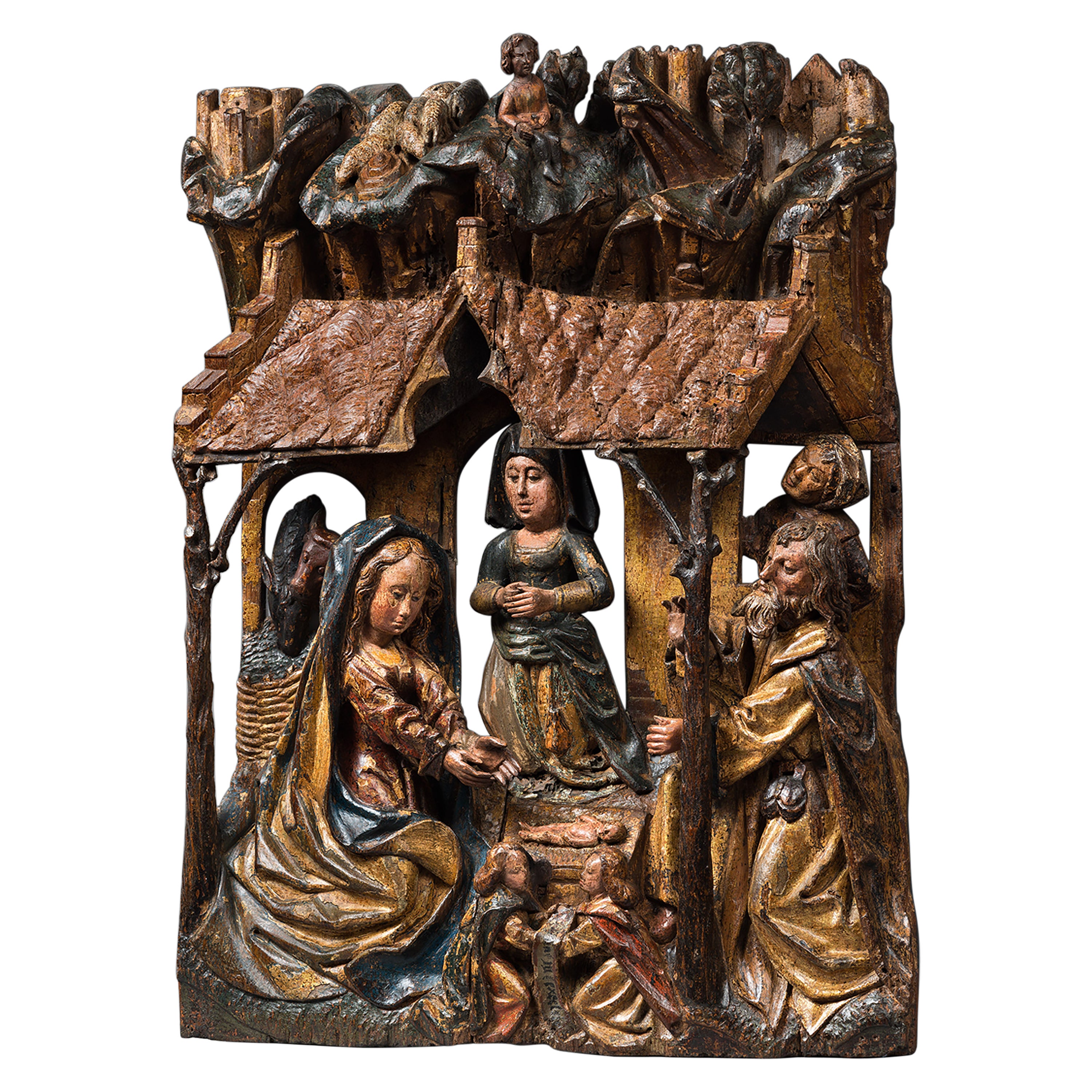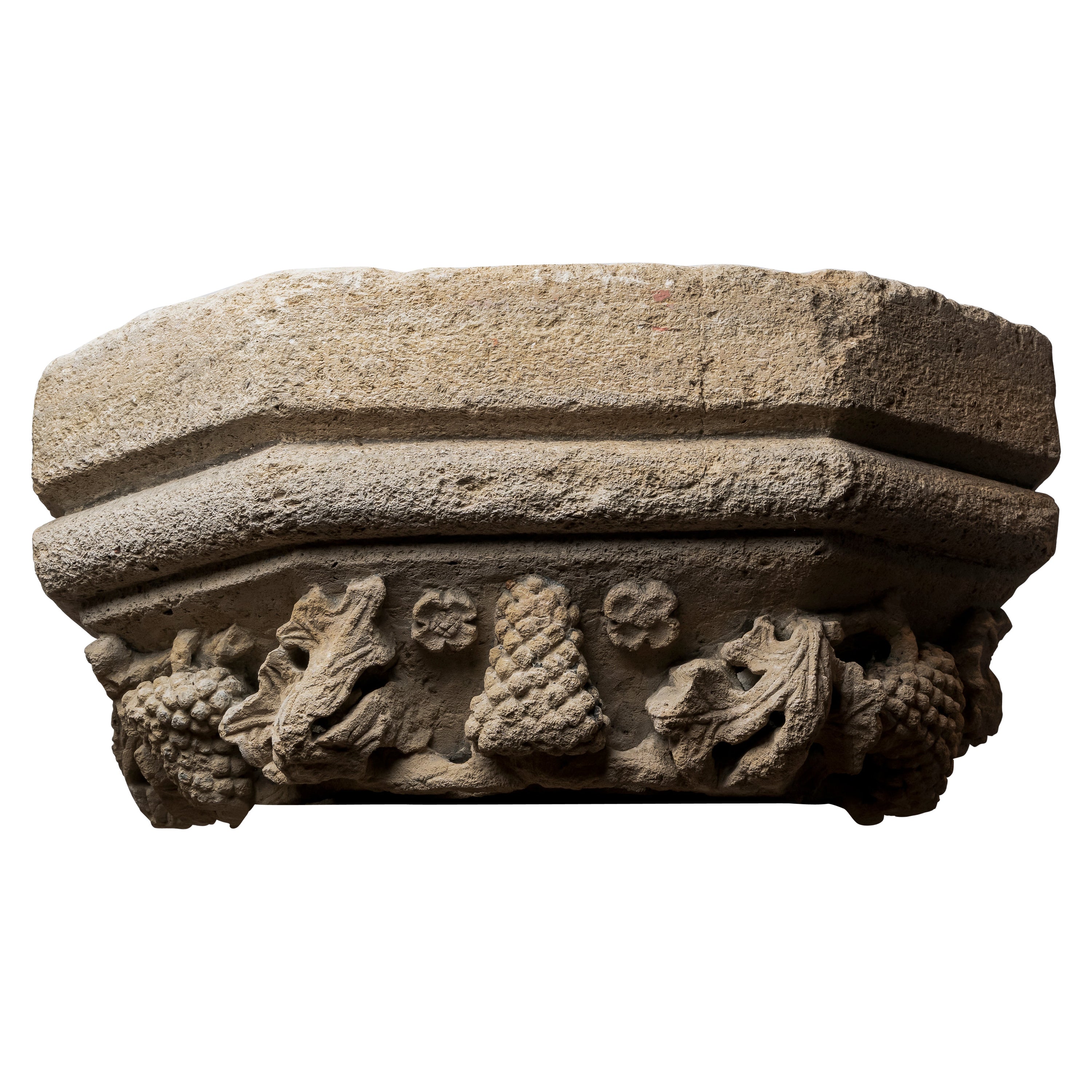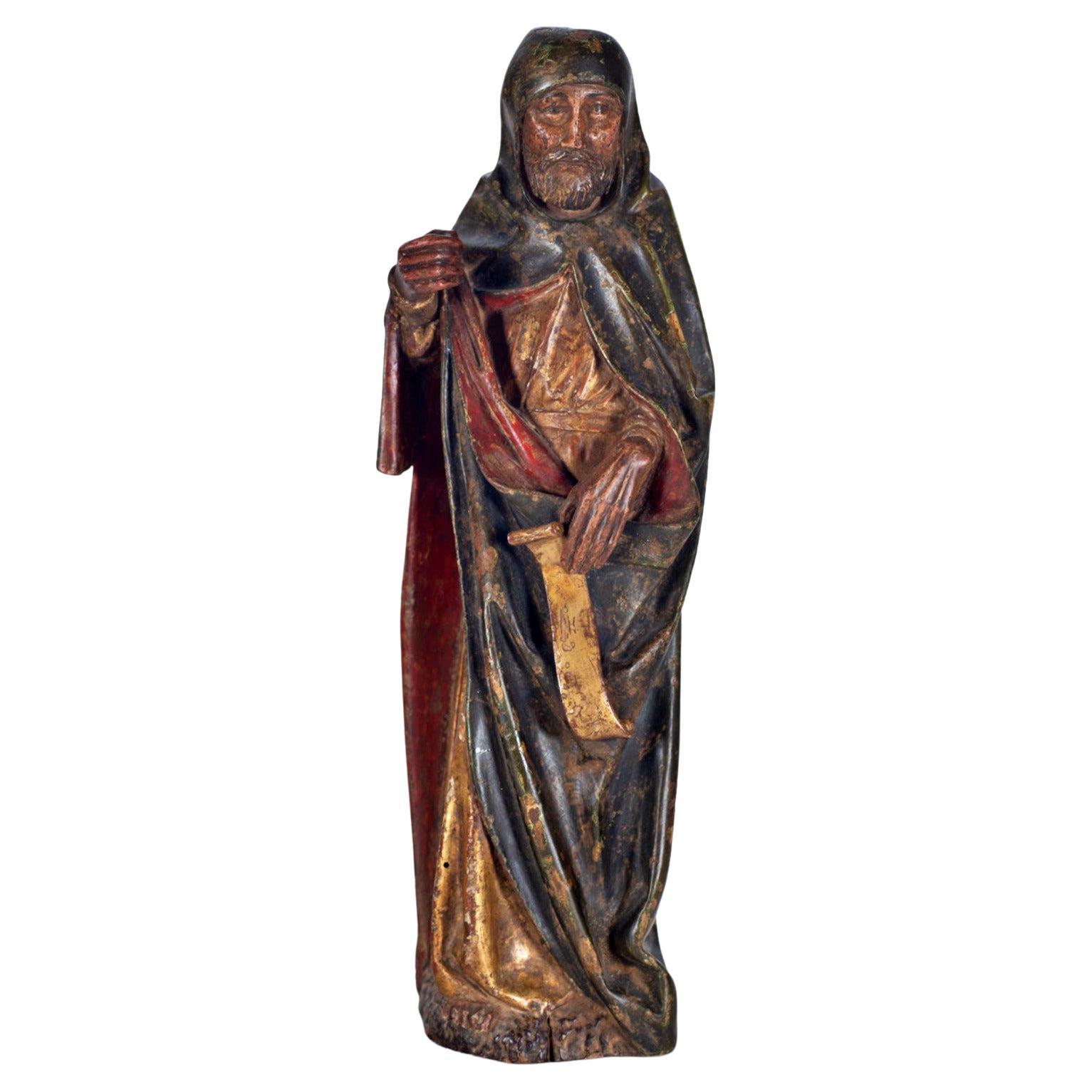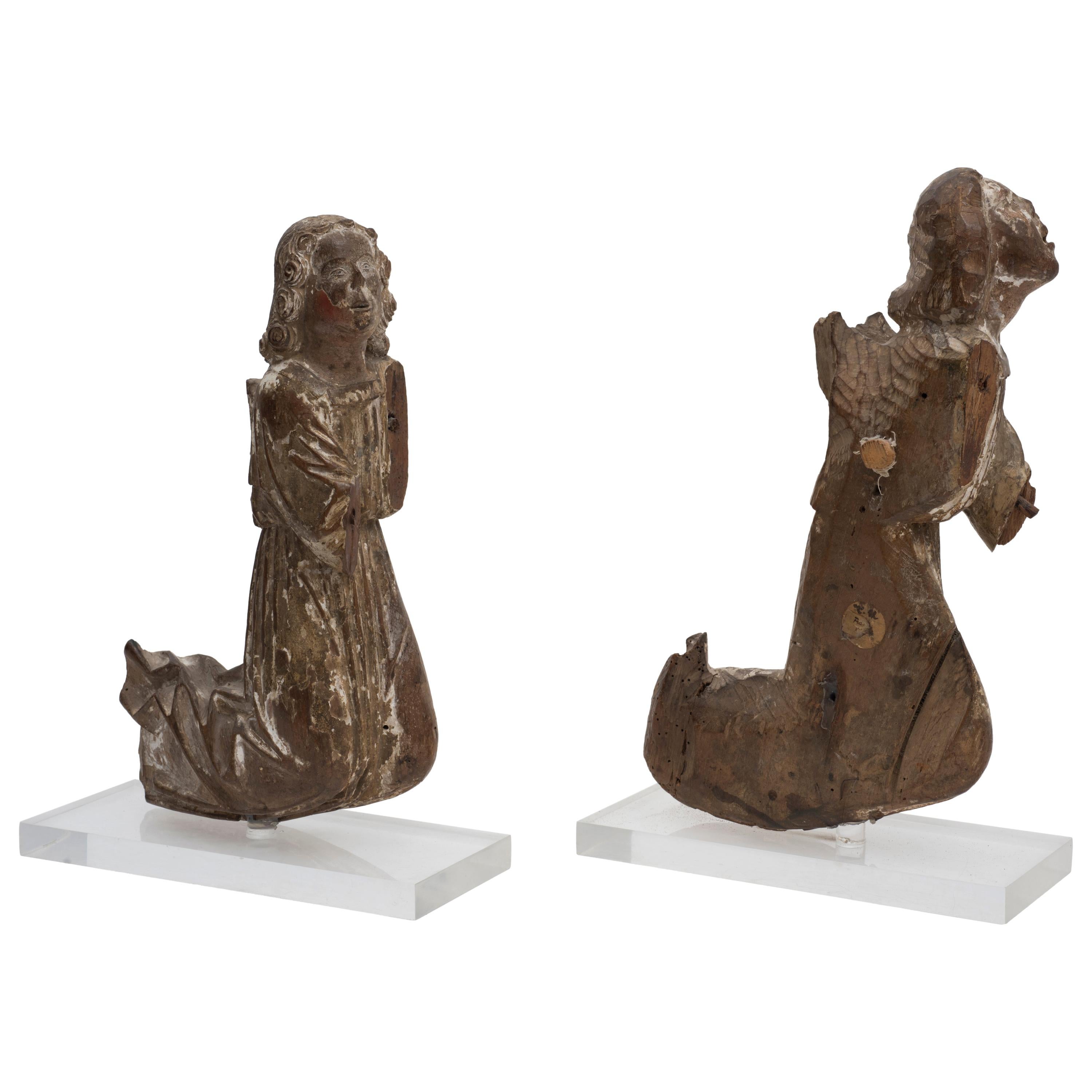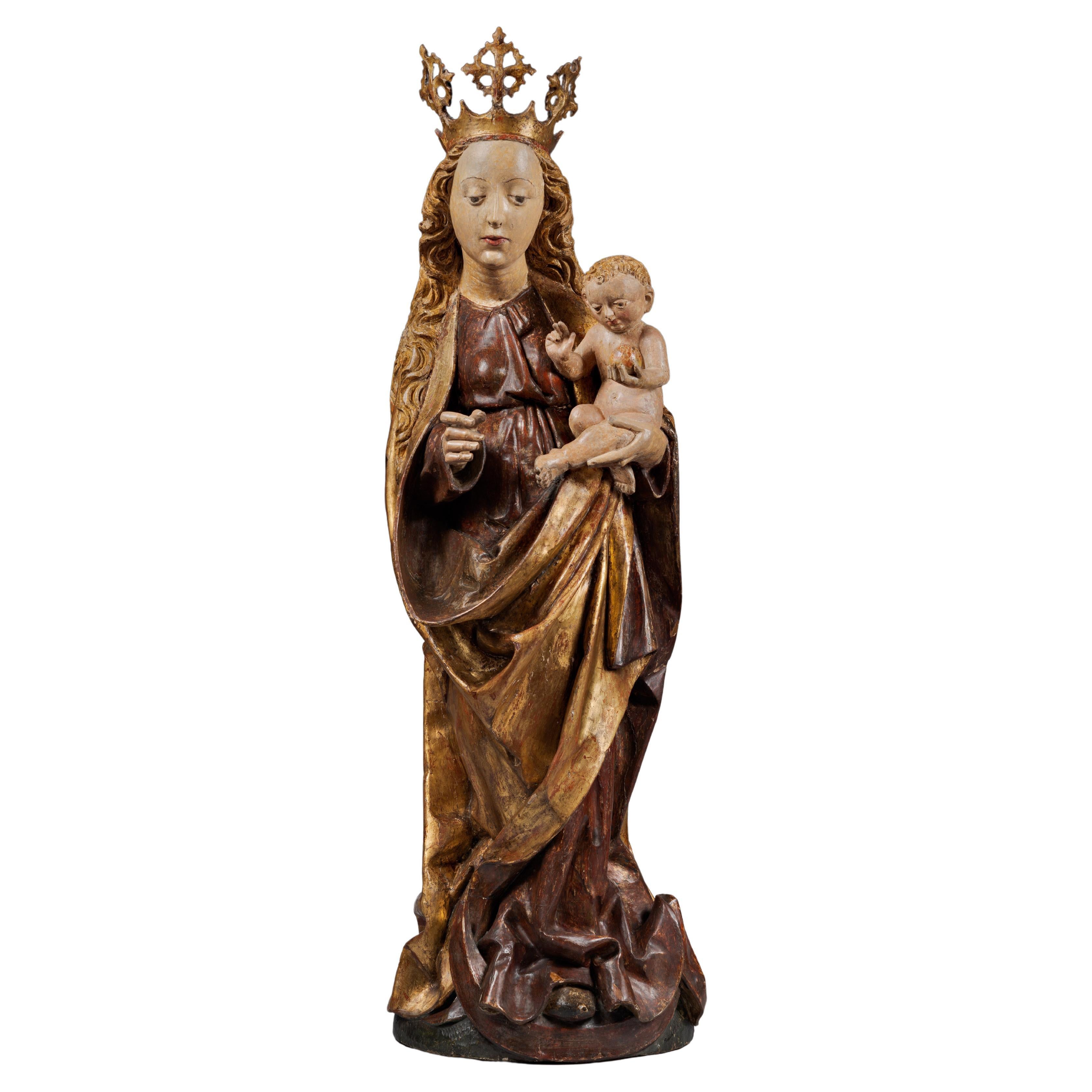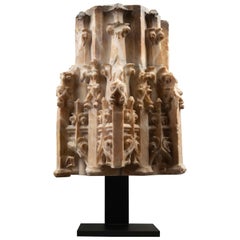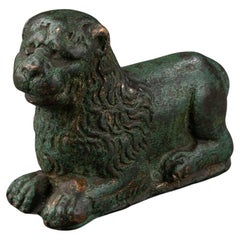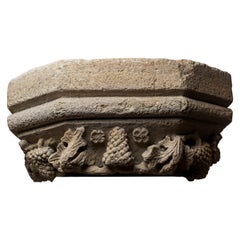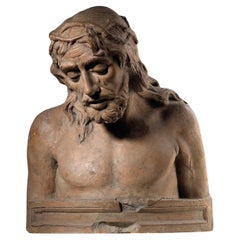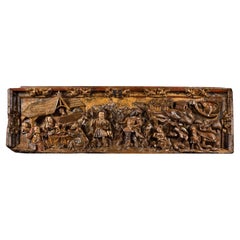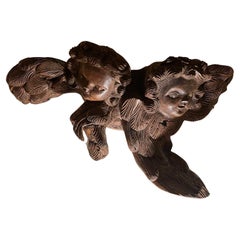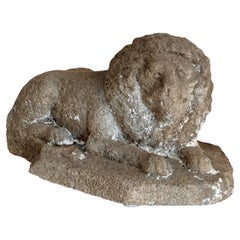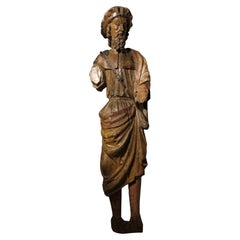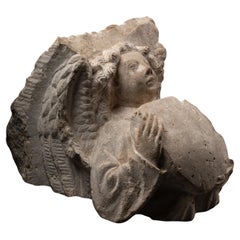
Corbel with an Angel Holding a Shield - Burgundian Netherlands 15th century
View Similar Items
Want more images or videos?
Request additional images or videos from the seller
1 of 9
Corbel with an Angel Holding a Shield
- Burgundian Netherlands 15th century
$11,272.51List Price
About the Item
- Dimensions:Height: 9.85 in (25 cm)Width: 6.5 in (16.5 cm)Depth: 7.29 in (18.5 cm)
- Style:Gothic (Of the Period)
- Materials and Techniques:
- Place of Origin:
- Period:
- Date of Manufacture:15th century
- Condition:Wear consistent with age and use.
- Seller Location:Bruxelles, BE
- Reference Number:1stDibs: LU6666245053632
About the Seller
5.0
Vetted Professional Seller
Every seller passes strict standards for authenticity and reliability
1stDibs seller since 2022
15 sales on 1stDibs
Typical response time: 2 hours
Authenticity Guarantee
In the unlikely event there’s an issue with an item’s authenticity, contact us within 1 year for a full refund. DetailsMoney-Back Guarantee
If your item is not as described, is damaged in transit, or does not arrive, contact us within 7 days for a full refund. Details24-Hour Cancellation
You have a 24-hour grace period in which to reconsider your purchase, with no questions asked.Vetted Professional Sellers
Our world-class sellers must adhere to strict standards for service and quality, maintaining the integrity of our listings.Price-Match Guarantee
If you find that a seller listed the same item for a lower price elsewhere, we’ll match it.Trusted Global Delivery
Our best-in-class carrier network provides specialized shipping options worldwide, including custom delivery.More From This Seller
View AllGothic Canopy, France, 15th Century
Located in Bruxelles, BE
Gothic canopy
France, 15th century
Alabaster, some traces of polychromy
33 x 23 x 20 cm
Provenance:
- Private collection Genève, Switzerland
...
Category
Antique 15th Century and Earlier French Gothic Figurative Sculptures
Materials
Alabaster
reclining lion in finely chased bronze - Italy, 15th century
Located in Bruxelles, BE
Small reclining lion in finely chased bronze
Italy, 15th century
Traces of gilding
H 4,8 x L 6 x P 2 cm
Delicately worked bronze depicting a lion in repose, characteristic of early ...
Category
Antique 15th Century and Earlier Italian Gothic Animal Sculptures
Materials
Bronze
Large Hexagonale Base of Pilaster in Burgundy Stone, Burgundy, 15th Century
Located in Bruxelles, BE
Large base of molded hexagonal pilaster in burgundy stone carved with vines, grapes and rosettes in high relief.
Burgundy, 15th century
28 x 63 x 30 cm
Provenance : collection De...
Category
Antique 15th Century and Earlier French Gothic Architectural Elements
Materials
Stone
$6,170 Sale Price
20% Off
Ecce Homo - Florence, 15th century
Located in Bruxelles, BE
A terracotta bust "Ecce Homo"
Florence, 15th century
53 x 44 x 31 cm
Category
Antique 15th Century and Earlier Italian Renaissance Figurative Sculptures
Materials
Terracotta
Renaissance Winged Cherub Relief
- Florence, 15th century
Located in Bruxelles, BE
Renaissance Winged Cherub Relief
Florence, Second Half of the 15th Century
Stone with traces of polychromy
Provenance: Important private collection, Northern Italy
This exceptional...
Category
Antique 15th Century and Earlier Italian Renaissance Figurative Sculptures
Materials
Stone
Christ - Umbria, second half of the 15th century
Located in Bruxelles, BE
Christ
Umbria, Orvieto?
Second half of the 15th century
77 x 16.5 cm
Category
Antique 15th Century and Earlier Italian Renaissance Figurative Sculptures
Materials
Walnut
You May Also Like
15th Century Burgundian Low-Relief Depicting Scenes of the Nativity
Located in Saint-Ouen, FR
Provenance : In the same private collection for several generations, Burgundy.
The canonical Gospels describe briefly the episode of the Nativity. It comprises three parts :
• The Preludes : the Journey to Bethlehem, the Census
• The Nativity
• The Announce to the Shepherds and the Adoration of the Magi
Only the Gospel according to Matthew (2, 1-12) speaks about the Adoration of the Magi. Staying vague about their number it does say they brought the newborn gold, incense and myrrh. The apocryphals, the fathers of the Church and many other authors have filled in the gaps of the evangelic tale. The sobriety and symbolic of the story have been a huge inspiration to artists. Although one of the oldest depictions of the Adoration of the Magi dates from the 2nd century the theme became very popular in Christian art during the late 14th century. One of the reasons explaining this success is that it celebrates both the Virgin and Christ at the same time.
This important walnut panel is carved in a strong relief and depicts the different steps of the story of Jesus’ birth.
On the left, the donkey and ox that have accompanied Mary and Joseph from Bethlehem are depicted behind a trough. On the thatch roof appears the star that would guide the magi to the place of birth of Jesus.
Mary is wearing a veil and is seating on a bed. She holds her baby at arm’s length to present him to the magi. Saint Joseph is by her side. The old man is holding a cane in his left hand while from the right hand he seems to uncover himself to greet the visitors.
A woman assists to the scene.
In front of the holy family the three magi stand behind one another to pay their homage to the newborn.
The first magi has a pointed beard. He is already kneeling out of deference and has placed his crown to his feet. He gives the baby a hanap filled with gold coins. This is Melchior as the legend describes him with white hair and a long beard.
Caspar, the second magi bears a cup of incense. He is looking at the third magi and with his right hand he points to the star that has guided them there. He has a short beard and wears crakow shoes, breeches and a wide sleeved doublet.
Finally Balthazar, the elegant last magi proceeds proudly towards the holy family with his one hand on the saber’s hilt and the other holding a cup. He brings the divine child the myrrh. He probably just dismounted as the horse can be seen behind him.
The scene is set in a very detailed and narrative decor. In the right part of the panel the shepherd receive the announce of Jesus’ birth. An angel comes down from heaven with a scroll bearing the good news in his hands. The herding dog sleeps peacefully while sheeps graze. At the top of the cliff we notice the gilded sheeps enclosure.
The panel’s moulded frame is carved with a foliated decor. In it’s centre appears a coat-of-arms. It is the alliance of the three magi’s arms. Indeed as it was common for legendary figures the three of them received imaginaries coat-of-arms. Thus, on a field of azure stands a star for Melchior, a crescent for Caspar and a pennon for Balthazar.
This high-relief panel is undeniably the work of a very skilled and imaginative artist. This key moment in the New Testament is transposed to a contemporary environment thanks to the figures’ clothing and the rural daily life scene. This way the universal dimension of the episode is highlighted allowing a better understanding for the contemporaries.
The sculptor has represented the episodes of the Adoration of the Magi and the Announce to the Shepherd with great talent and numerous details giving life to a picturesque and narrative scene. The important traces of polychromy give those already very animated scenes a stronger pictorial power and a rich dynamism.
Because of the picturesque and familiar realism so dear to the artists of the late Medieval era, of the didactic function of this type of panel as well as the quality of the sculpture this piece is an astounding example of Burgundian art of the 15th century.
Literature
Louis Réau, Iconographie de l’Art chrétien...
Category
Antique 15th Century and Earlier French Gothic Figurative Sculptures
Materials
Walnut
Rare Large 15th Century Renaissance English Oak Roof Angels Corbel.
Located in Vero Beach, FL
Rare Large 15th Century Renaissance English Oak Roof Angels Corbel.
Truly astonishing rare roof angels, circa 1450. The large Medieval carvi...
Category
Antique 15th Century and Earlier English Medieval Figurative Sculptures
Materials
Oak
French Gothic Stone Lion, 15th Century
Located in Charlottesville, VA
French Gothic Stone Lion. a reclining stone lion with shaped base, 15th Century. Found at St. Sulpice. Height: overall 7 in. x Width: 11 in. x Depth: 6 1/2 in.
Category
Antique 15th Century and Earlier French Gothic Animal Sculptures
Materials
Stone
15th Century Carved Wood Depicting Saint James
Located in Saint-Ouen, FR
The Saint depicted here is Saint James the Great.
James is the brother of St. John the Evangelist. Nothing is known of his activities after the Ascension...
Category
Antique 15th Century and Earlier French Gothic Figurative Sculptures
Materials
Oak
15th Century Corpus Christi Wood Sculpture
Located in Stockholm, SE
Rare late 15th century or early 16th century Gothic Corpus Christi wood sculpture. Probably North German or South Sweden. This large Christ sculpture...
Category
Antique 15th Century and Earlier German Gothic Figurative Sculptures
Materials
Wood
Late 15th Century Polychrome Wood Carving Depicting the Nativity
Located in Saint-Ouen, FR
While the birth of Christ is briefly told in the Gospel of Luke (2, 7) it is in the apocryphal texts that we find most of the elements and details that have then inspired artists. As of the 14th century and even more of the 15th century the subject of the Adoration of the Child replaces in Western art the scene of the Birth, much favoured in Byzantine art. Instead of being depicted lying with the new-born swathed in the manger, the Virgin is now kneeling, her hands joined in prayer in front of the naked child. This change was probably hastened by the popularity of the visions of Saint Bridget of Sweden to whom the Virgin allegedly appeared to show how she had given birth to Jesus (Visions, VII, chap. 21).
Sheltered by a thatch-roofed structure the Virgin is kneeling in front of the Child Jesus. She wears a magnificent red dress under a large gold cloak. Her curled blond hair is partially veiled. The newborn is lying on a straw mat. Joseph is depicted with a parted beard and stands opposite from the Virgin. He wears a tunic and a coat with a purse hanging from the belt. His costume reminds us of the long journey him and Mary have accomplished to reach Bethlehem.
Two other women are present. One is looking through the stable’s window to observe the Holy Family while another one kneels in prayer in front of the divine child. The rich costume of the lady might indicate she is a donator.
However they could also both represent the women who took part in the birth of Christ, Zelemi and Salome. Salome, incredulous did not believe in the virginal conception of Mary and she is represented far from the scene. The artist has depicted her with an expression of doubt on her face. Zelemi, on the contrary, is a believer. She is rewarded by a place of honour at the heart of the scene, close to Mary.
To the left the donkey and ox that have accompanied Mary and Joseph to Bethlehem observe quietly the scene.
On the foreground two angels hold a scroll reading an excerpt from the Gloria : “/Gloria/ in excelsis /Deo/.” One of the angels wears a blue cape while the other’s is red Those two colours are very significant as during Middle-Ages blue symbolises hope and red charity. Together they express the hope in redemption thanks to the advent of Christ and his sacrifice to come.
Above the main scene, up a cliff, a small shepherd lets his herd of sheep graze amidst the trees. He is framed by two walled cities.
This wood carving is the work of a very skilled and inventive artist. The piece bears witness to his exceptional talent. The realism of the scene is emphasised by the amount of details depicted. The refinement of the carving itself is highlighted by the well preserved polychromy.
This key moment of the New Testament is set in a contemporary context thanks to the clothes of the characters and the scenes of rural life. The universal dimension of the scene is intensified while allowing contemporary viewers to grasp its meaning more easily.
This care for details, the picturesque realism as well as the extraordinary rendition of the cloths suggest it was made by a Flemish artist during the late 15th century.
This relief can be compared with the panel of the Nativity from the Saint-Vaast altarpiece made by Jacques Daret between 1433 and 1435, today in Madrid’s Thyssen-Bronemisza Museum.
Literature
Louis Réau, Iconographie de l’Art chrétien...
Category
Antique 15th Century and Earlier Dutch Gothic Figurative Sculptures
Materials
Wood
